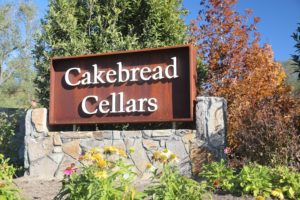
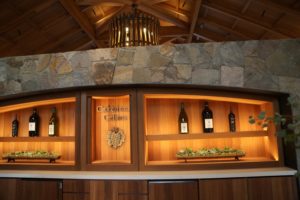
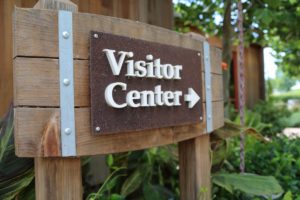 Cakebread Cellars. As one of the iconic family-owned wineries of Napa Valley, while relentlessly promoting their own wines, Cakebread Cellars has played an integral role in educating visitors about Napa Valley and promoting this special slice of the state. From humble beginnings rooted in Oakland California, Cakebread has become one of the wines most synonymous with Napa Valley.
Cakebread Cellars. As one of the iconic family-owned wineries of Napa Valley, while relentlessly promoting their own wines, Cakebread Cellars has played an integral role in educating visitors about Napa Valley and promoting this special slice of the state. From humble beginnings rooted in Oakland California, Cakebread has become one of the wines most synonymous with Napa Valley.
Founders, John, known as Jack (died 2022) and Dolores Cakebread (died in 2020) owned a car repair business in Oakland called Cakebread’s Garage at 803 E. 12th Street, a business that Jack’s father Lester began in 1925; the building from when it was last operating as Cakebread’s Garage is still there, not far from Clinton Square but is now home to BAI Auto Repair. During our last visit to this space, remarkably the Cakebread Cellars etched sign into the glass on one of the upstairs doors was still there.
Jack’s interest in expressing himself through the arts was evident even at a young age. When he was 10 he wrote a short poem which won a prize and was printed in the May 26, 1940 edition of the Oakland Tribune.
Cakebread served with the U.S. Airforce during the Korean War. His introduction to farming was through his father’s orchard in Brentwood, Contra Costa County. A short but bucolic street in a residential part of Brentwood carries the name: Cakebread Place. Golden Poppy Park is located at the east end of this street, a relaxing place to hang out and read a book. One of Cakebread’s former employees told us that every so often, customers would drive to Cakebread Place, completely mistaking that location for the winery. The Cakebread family are one of the pioneer families of this old farming community and were involved in almond and peach farming. And reference the Shannon/Williamson Ranch on Lone Tree Way in Brentwood for more family history.
Cakebread began to explore his photography talents in the early 1960s. He was a member of the Oakland Camera Club and became a prolific photographer. To call him an amateur photographer was not an accurate description. He exhibited paintings in galleries both domestically and internationally, county fairs, libraries and won or placed high in a number of photography contests. He also sold photography calendars featuring his images, was published in newspapers including the Oakland Tribune and his works were displayed in the permanent collections at several museums including the Oakland Art Museum and the Amon Carter Fort Worth Museum of Texas. His photography was primarily coastal California, the Sierra Nevada mountains and desert scenery.
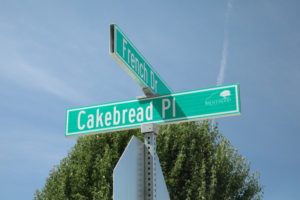 One highlight of his career was spending several months restoring and processing old negatives taken by attorney and photographer Ralph Cross of San Francisco after the 1906 earthquake and subsequent fire destroyed much of that city.
One highlight of his career was spending several months restoring and processing old negatives taken by attorney and photographer Ralph Cross of San Francisco after the 1906 earthquake and subsequent fire destroyed much of that city.
Cakebread received guidance from several accomplished photographers, but studied under the famed outdoor photographer Ansel Adams for about 9 years. Adams had this to say about Cakebread, “one of the best amateur photographers in the west. He does exceptionally well.” Cakebread’s introduction to Ansel Adams was through a gift certificate to one of his classes that Dolores gave him as a Christmas present.
Jack and Dolores founded Cakebread Cellars in 1973 with a release of merely 157 cases of Chardonnay sourced from vineyards owned by Trefethen Winery and made this first vintage at Trefethen. Their first ever vintage of Cabernet Sauvignon was from 1974, the same year their first small winery was built on the property. In 1975 with not enough space at their new winery to handle their increased production, they processed their Cabernet Sauvignon from this vintage up at tiny Keenan Winery on Spring Mountain, above St. Helena.
Cakebread’s former garage building, Oakland
With their initial tiny production, Jack thought if he wasn’t able to sell the wine, he could always drink it. Fortunately, the owner at the time of Groezinger’s wine shop in Yountville which is still there by the way, but now called Wine Country Connection, Phillip Faight purchased most of their inaugural vintage 1973 Chardonnay. Phillip was able to sell this wine to sophisticated wine drinkers, mostly from the San Francisco Bay area. As a result, word quickly spread about the quality of the 1973 Chardonnay and production soon increased rather rapidly.
Today their sons, Bruce (working at Cakebread since 1978, for more than 20 years as winemaker) and his brother Dennis (working at Cakebread full-time since 1987) oversee the overall winery operations. Both Bruce and Dennis worked at the winery in their early years. Dennis is also the founder of Mullan Road Cellars, based in Walla Walla, Washington – a brand that sources from several vineyards in that part of the state.
And their brother Steve Cakebread has enjoyed a long and prominent career in financial services including as CFO for Autodesk and Director of Finance at Hewlett-Packard. And he has been on teams that took companies public including Salesforce and Pandora. In 2020 he wrote the book, An Insider’s Perspective on Taking Your Company Public and How to Do It Right. He and his wife Jill developed the 300-acre The Cakebread Ranch along the Salt River in Freedom, Wyoming.
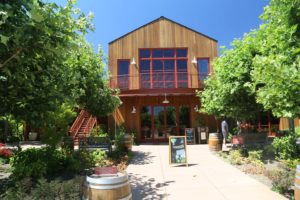
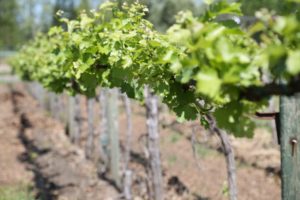
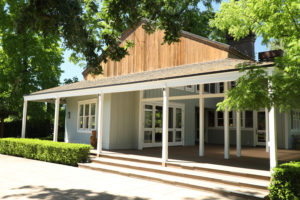 Wondering why Ansel Adams never photographed the Napa Valley? Ansel was awarded a contract to photograph the valley for The Treasury of American Wines book, but he gave the contract to Jack Cakebread instead. In an interesting twist of fate, Turnbull Cellars, located next door to Cakebread holds the largest private collection of Ansel Adam’s works in the valley.
Wondering why Ansel Adams never photographed the Napa Valley? Ansel was awarded a contract to photograph the valley for The Treasury of American Wines book, but he gave the contract to Jack Cakebread instead. In an interesting twist of fate, Turnbull Cellars, located next door to Cakebread holds the largest private collection of Ansel Adam’s works in the valley.
During a photo shoot for this book in 1972, Jack stopped to visit old friends Robert (Jack) and Helen Sturdivant who owned the Sturdivant Ranch in Rutherford. Jack worked for Associated Oil before getting into the ranching business. And what is now the site of Cakebread Cellars was not the only property he owned in Napa Valley; according to a mention in The Napa Valley Register in 1970, he also owned more than 400 acres in Conn Valley. The Sturdivant’s also raised a few sheep, grew walnut trees and grape vines on their Rutherford property.
The Cakebread’s told the Sturdivant’s to call if they ever wanted to sell – merely hours after arriving back home in Oakland Jack & Dolores received a call from their friends who after thinking about Cakebread’s offer decided they were in fact interested in selling their property. The rest is history – short on funds, Jack and Dolores offered to put a down payment on the property with the advance that Jack had received from the book he was working on. The offer was accepted with the caveat that the Sturdivant’s could live on site as long as they wanted. Jack and Dolores commuted from Oakland to Napa for many years, sold Cakebread’s Garage in 1988 to their employees and moved to Napa Valley full time in the early 1990s.
Ever the one to support his community, Cakebread coached youth baseball in Oakland in the 1960s; in 1970 he sponsored a very successful little league team in Oakland called the Cakebread Cubs. Cakebread later served the Napa Valley wine community through several leadership positions. In 1990 he was President of the Napa Valley Vintners association (both Dennis and Bruce would later also serve as presidents of this organization) and also was president of the Napa Valley Grape Growers organization. Jack was CEO of Cakebread Cellars until 2015.
Hospitality
The winery is located slightly north of Robert Mondavi Winery on the east side of Highway 29. During busy times of the year (usually summer and fall weekends) a parking attendant may be stationed at the entrance to the parking lot to verify that guests have appointments as well as directing visitors where to park. Visitors must check in at the reception before joining any tours or tastings.
The Classic Cakebread Tour includes a guided walk through the winery with tasting stations strategically located along the way where guests will stop and enjoy selected bottles of Cakebread wines.
The Sustainable Wines & Vines Tour is 90-minute in depth tour which provides an intimate look at the surrounding vineyards and Cakebread’s winery operations; it ends with a sit down tasting. This educational tour provides a broad overview of various wine topics and would be especially beneficial for someone new to wine tasting. These tours and other events are among the best values for the price in the valley.
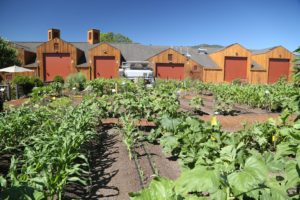
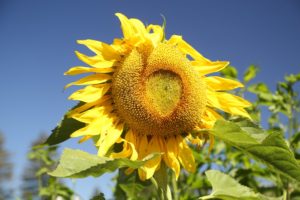 The Cakebread tour guides are very informative and friendly – they invite questions from visitors; this is an excellent opportunity to learn more about the wine business.
The Cakebread tour guides are very informative and friendly – they invite questions from visitors; this is an excellent opportunity to learn more about the wine business.
Food is an important part of Cakebread; the winery often holds food and wine pairing events, sensory seminars, as well as other educational events. In 1987 Cakebread founded the American Harvest Workshop highlighting numerous chefs and others in the food preparation business through a variety of seminars and dinners. Dolores was an integral part of Cakebread’s success including in particular their culinary programs. She and Jack authored several cookbooks including in 2003, The Cakebread Cellars Napa Valley Cookbook: Wine and Recipes to Celebrate Every Season’s Harvest.
During a number of visits over the years in the fall we have had the chance to see the winery really in action during harvest – which is always an ideal time to tour a winery. Cakebread operates two completely separate wine making facilities; one for white wine and one for red wine. During harvest we have seen employees zipping back and forth between the two on electric scooters and bicycles. A full bottling line ensures they can bottle on their own schedule. Tours will stop in both the fermentation and barrel rooms, the rear of the winery where the wine presses are located and a stop in the vineyard to closely examine some of the vines.
One of the tour highlights is of course tasting the wine and guests do so in a number of spaces on the property including inside the winery. Nine private tasting rooms are located within the winery including one upstairs (formerly used as their reserve tasting lounge) but now sometimes used for virtual tastings. Each of these 9 spaces are named after one of their vineyards, and each contains a photograph of its vineyard namesake.
The ceiling above the first floor of what is now the Cakebread member’s lounge is literally made from used corks; certainly the most corks you will see in one place at any Napa Valley winery. One of their employees told us he made a rough count and then calculated around 45,000 corks are here. The views from the 2nd level balcony are excellent – one looks east over a sea of vineyards. A tour also includes a view of the original winery where Jack Cakebread made his first vintage in 1973.
The house next to the Cakebread courtyard was originally the home for Robert and Helen Sturdivant. Dolores and Jack also lived here for a few years. Today it has multiple uses, as a kitchen and Jack’s old corner office is still being used as an office space.
The Garden
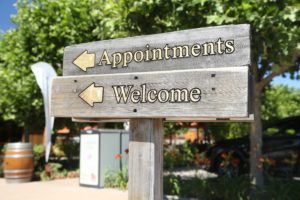
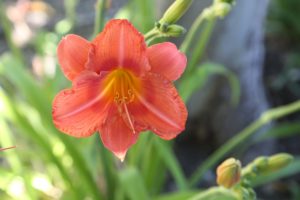 About 2/3 of an acre of land is located in the back of the winery as a dedicated garden space. The Cakebread garden was originally founded by Dolores; today it is a source for fresh vegetables and herbs used in their culinary program along with a number of edible flowers. And some of the flowers, as long as their perfume is not too strong, are used to brighten up certain hospitality spaces. Small paths bisect rows of plantings – visitors can wander through at their leisure. A master gardener oversees everything growing here.
About 2/3 of an acre of land is located in the back of the winery as a dedicated garden space. The Cakebread garden was originally founded by Dolores; today it is a source for fresh vegetables and herbs used in their culinary program along with a number of edible flowers. And some of the flowers, as long as their perfume is not too strong, are used to brighten up certain hospitality spaces. Small paths bisect rows of plantings – visitors can wander through at their leisure. A master gardener oversees everything growing here.
Over the years, we have seen a diversity of vegetables growing here including tomatoes, lettuce, kale, luffa, several species of melons, corn, squash and sunflowers among other items.
Most Napa Valley wineries don’t employ a full-time chef; those that do, usually only have one on their staff, but Cakebread employs several chefs. With fresh produce straight from the garden, trained chefs on site and excellent wine, Cakebread is the epitome of Napa Valley lifestyle.
Vineyards
The estate property which surrounds the winery has grown over the years as neighbors sold off bits and pieces to Cakebread. Today the home vineyard is 50 acres of vines on 68 total acres – planted to several varieties including Sauvignon Blanc and Cabernet Sauvignon.
Over the decades, Cakebread has acquired approximately 1,900 acres with the majority located in Napa Valley but also several vineyards to the north in Mendocino County. Presently, approximately 700 acres are planted to vines encompassing 14 different vineyard sites (12 in Napa Valley and 2 in Anderson Valley).
Perhaps the crowning hillside jewel of their vineyard collection is the Dancing Bear Vineyard high on the slopes of Howell Mountain offering some of the *most spectacular* views of nearly all of the entire Napa Valley spread out far below. This vineyard was their first Napa Valley acquisition in 1998 outside of their winery Oakville and Rutherford ‘home vineyards’.
Cakebread uses sustainable practices in their vineyards with a strong emphasis on careful management of water. This includes growing cover crops, mulching and composting, and monitoring soil moisture as it relates to vine health. Their vineyards are certified Napa Green; this certification program is run by the Napa County Department of Public Works and the California Green Business Program overseeing water conservation and reduced energy and waste within Napa county based wineries.
Harvest for Cakebread runs about three months – typically starting in early August and finishing in early October. Remarkably all the grapes from their estate vineyards are still harvested by hand, with picks made at night when it is cooler.
Select Wines
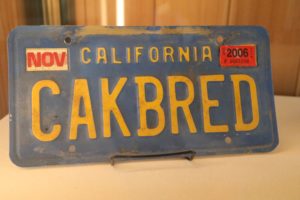
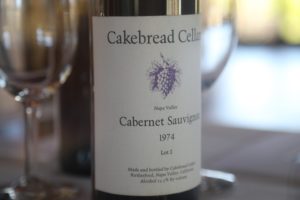 Seventy percent of Cakebread’s production is white varieties (mainly Chardonnay and Sauvignon Blanc) with the majority of their red production being Cabernet Sauvignon. Cakebread produces premium wines (at a fairly sizable production for Napa Valley standards); the wines are found in many high-end restaurants nationwide and it is through this distribution along with word of mouth that people often discover their wines.
Seventy percent of Cakebread’s production is white varieties (mainly Chardonnay and Sauvignon Blanc) with the majority of their red production being Cabernet Sauvignon. Cakebread produces premium wines (at a fairly sizable production for Napa Valley standards); the wines are found in many high-end restaurants nationwide and it is through this distribution along with word of mouth that people often discover their wines.
Whites
The Cakebread Chardonnay is very well known especially among the restaurant industry as that is a key sales channel for this wine. Their Chardonnays undergo sur lee barrel aging (the lees or sediment at the bottom of the barrels are stirred by hand). Their Chardonnays are also mostly barrel fermented – rather than fermented in tank; their reserve Chardonnay sees more aging than their more widely distributed Chardonnay.
The 2020 Cakebread Cellars Reserve Chardonnay is a blend from four vineyards owned by the Cakebread family, all located in the cooler Carneros District in the southern part of Napa Valley. These sites include Foster Road (the first Carneros vineyard purchased by Cakebread in 2023), Cuttings Wharf, Milton Road (the southernmost vineyard in Carneros) and Tinsley Road. This wine was aged for 10 months in 33% new French oak, 19% concrete eggs, 5% in neutral puncheons and 43% in neutral French oak. 35% of the wine went through malolactic fermentation; the portion in barrel was aged sur lies. It is deep gold in color; the bouquet sports scents of honeycomb, butterscotch, creme Brule, vanilla and ripe stone fruits including apricot, peach and nectarine along with mango. Texturally rounded, with a supple creamy character, this wine offers flavors somewhat mirroring the palate including of honeycomb, apricot, peach and mango. The finish lingers with a toasted nutty character, including of hazelnut, a richness of fruit and a brightness of acidity. This is a concentrated yet simultaneously balanced and enjoyable Chardonnay.
The first wine ever released from Cakebread Cellars was their 1973 Napa Valley Chardonnay. They continue to produce this wine each year, while maintaining its attractive price point. The 2021 Cakebread cellars Chardonnay, Napa Valley was sourced from Napa Valley’s Carneros appellation. This wine is medium gold in color; the bouquet is minerally with aromas of pineapple, Golden delicious apple, honeycomb, yellow peaches and cantaloupe. The aromatic influence from its oak aging is light. This is a balanced and bright bottling with flavors of apple, pear, honeydew melon, vanilla and a note of chamomile. The palate sports a silky mouth feel. Oaky, buttery, or a viscous bottling? Absolutely not. This wine was aged for 8 months on its gross lees in 32% new French oak barrels; 13% of the wine went through malolactic fermentation.
In honor of Cakebread’s 50th year anniversary, for the 2021 vintage only, Cakebread produced four separate vineyard designate bottlings of Chardonnay. These were sold as a 4-pack set, packaged in a handsome box.
Sauvignon Blanc was the first white variety the Cakebread’s planted (next to the winery) in part because of Dolores’s love of white wines and at the urging of their neighbor Robert Mondavi who offered to purchase grapes if they planted this variety (which he did). Incidentally Sauvignon Blanc still grows on the winery property; as of the latest update to this review, they are the oldest vines in any of Cakebread’s vineyards, having been planted in 1991.
Until 2018 the Cakebread Sauvignon Blanc was designated Napa Valley. However with the addition of grapes from Mendocino County, this wine is now designated as a North Coast bottling.
The 2023 Cakebread Cellars North Coast Sauvignon Blanc is 99% Sauvignon Blanc and 1% Sémillon. This wine is medium gold in color; it is highly aromatic and immediately open-knitted with aromas of honeysuckle, orange blossom, freshly mowed lawn, Bosc pear, white nectarines, pineapple, pineapple guava and lychee. And a bubble gum aromatic that reminded of us of opening Topps baseball cards in your youth, back when packs of baseball cards included a stick of gum. Bright and minerally across the palate, it reveals flavors of lime, honeydew melon, white peaches and grapefruit. The acidity is bright but balanced and complements well the rounded and creamy texture. No green or grassy showing here. Balanced. Easy drinking. 95% of the grapes were fermented in stainless steel tanks with 5% in concrete eggs. The wine was aged for 5 months prior to bottling, with 64% in neutral French oak; 32% in stainless steel tanks and 4% in concrete eggs. This is one of better priced to quality Sauvignon Blancs from a Napa Valley based producer.
The 2018 Cakebread Cellars Sauvignon Blanc was sourced from 4 vineyards ranging from the cooler Carneros in the south to warmer Calistoga in the north. Pale straw yellow in the glass, this wine immediately offers bright aromatics with citrus blossom and a lemon and lime zest. Clean and balanced across the plate it shows a flint-like minerality along with flavors of gooseberry and green apple. This a lively showing but is not overtly green or grassy.
One of the more unique varieties growing in the Napa Valley is Verdelho – Cakebread Cellars grows about .10 of an acre on site with a few rows bordering Highway 29 on their estate just slightly south of the winery entrance. 2018 was their first vintage – they blended this with Viognier and just a tiny kiss of Sauvignon Blanc. The only other producer we know of in the Napa Valley who grows and produces wine from this variety is Coquerel Vineyard.
Reds


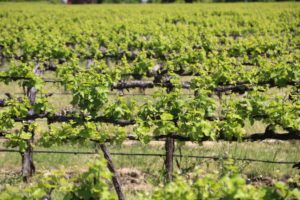 Cakebread’s Apple Barn Vineyard in the southern part of Anderson Valley in Mendocino County used to an apple orchard; the site is named after the still existing former apple barn. The 2021 Cakebread Cellars Pinot Noir Apple Barn is 100% varietal and is their fullest bodied Pinot Noir. This wine is medium ruby in color; the spice filled bouquet offers aromas of white pepper, dried rose petals, a light herbal note similar to tea leaves, and red fruits including boysenberry and currant. As the bouquet evolves in the glass it offers a note of espresso and roasted coffee beans. The palate is layered like the bouquet. Brightly lit with a balanced acidity, the palate offers flavors of red cherry, strawberry, raspberry, licorice, and assorted dried herbs including sage and bay leaf. The finish is mouth watering. The tannins are rounded, lightly grainy and are integrated smoothly into the finish. This wine was aged for 10 months in 35% new French oak and 65% neutral French oak.
Cakebread’s Apple Barn Vineyard in the southern part of Anderson Valley in Mendocino County used to an apple orchard; the site is named after the still existing former apple barn. The 2021 Cakebread Cellars Pinot Noir Apple Barn is 100% varietal and is their fullest bodied Pinot Noir. This wine is medium ruby in color; the spice filled bouquet offers aromas of white pepper, dried rose petals, a light herbal note similar to tea leaves, and red fruits including boysenberry and currant. As the bouquet evolves in the glass it offers a note of espresso and roasted coffee beans. The palate is layered like the bouquet. Brightly lit with a balanced acidity, the palate offers flavors of red cherry, strawberry, raspberry, licorice, and assorted dried herbs including sage and bay leaf. The finish is mouth watering. The tannins are rounded, lightly grainy and are integrated smoothly into the finish. This wine was aged for 10 months in 35% new French oak and 65% neutral French oak.
The 2019 Cakebread Cellars Suscol Springs Syrah, Napa Valley is 89% Syrah, 10% Grenache and 1% Viognier. This vineyard site is in the cooler southeastern part of Napa Valley. This wine is deep purple in color; the bouquet is a bowlful of ripe cherries, plums, blackberries, and dark raspberries with a subtle layer of baking spices including clove, along with old cedar box and pink peppercorns. There is also a floral component at play here, including violets and lilac. Fruit meets savory head on in this spirited California showing with flavors of dark plum, black cherry, boysenberry, dark chocolate, crushed dark pepper and assorted dried herbs including sage. Gamey. The palate is bright, juicy and lingers with darker spices. The tannins are rounded, resolved and are seamlessly integrated. We would love the company of this bottling with a tri-tip on the barbecue, covered in a spicy dry rub. This wine was aged for 15 months in 45% new French oak and 55% neutral French barrels.
The 2014 Cakebread Cellars Napa Valley Merlot is deep ruby in color; the bouquet offer a diversity of intriguing and sweetly fruited aromatics, as we nose this bottling 10 years post vintage. These include crème de cassis (this aromatic is very fresh in our mind as we recently opened a bottle), red plum, raspberry and blood orange accompanied by cardamom, nutmeg, cloves and vanilla. It smells like dessert, and in a blind tasting we probably would have either gone one of two ways: an older wine, or a sweet wine. This bottling is plush across the palate with a still noticeable ripeness and perceived sweetness of fruit. Flavors include dark, cherry, raspberry, dark plum and blackberry. The gravelly tannins are well tumbled and sport a rounded and dusty/chalky persistent character.
The 2020 Cakebread Vine Hill Ranch Cabernet Sauvignon is 100% varietal. Sadly, after a remarkably long run of producing wines from this iconic vineyard, the last Vine Hill Ranch Cabernet Sauvignon is the 2020 vintage. This wine is deep ruby in color and nearly opaque; the bouquet shows less fruit initially than perhaps previous vintages. Regardless it offers attractive and layered aromatics expressing both primary and secondary characteristics. It reveals scents of black plum, blackberry, dark cherry, a sweet tobacco spice, lightly toasted oak and dark chocolate. Bright and energetic across the palate, it reveals flavors of blackberry, cherry, dark raspberry and currant. It is superbly balanced at the 4 year post vintage date at the time of our tasting. It texture is a hallmark character with ripe, resolved, fine-grained and chalky tannins. Both texture and flavor parallel each other for some time on the lively and balanced finish. We smelled and tasted a bit of nostalgia as we were enjoying this wine.
The 2019 Cakebread Vineyards Vaca Cabernet Sauvignon is a blend of 7% Dancing Bear Vineyard, 24% Doggwood Vineyard and 69% Soscol Springs Vineyard. Grapes from each vineyard are harvested and fermented separately. This wine is named in homage to all its vineyard sources being hillside sites in the Vaca mountains. Its origins were as a red blend until the amount of Cabernet Sauvignon in the wine was consistently was more than 75%. Starting in 2018 this wine was bottled as a Cabernet Sauvignon. It is deep ruby in color; the fruit is immediately expressive and showcases aromas of dark cherry, cherry cola, blackberry, dry earth, chocolate, and as the bouquet evolves in the glass, notes of cinnamon stick and nutmeg. The palate offers flavors of red cherry, raspberry, currant and cranberry. We tried this wine 5 years post vintage; knowing the rocky and volcanic origins of much of the Vaca mountains, and sites generally with western facing slopes, this wine is already remarkably balanced. The palate offers both red and darker fruits. We love the mouth feel here – featuring powdery and chalky textured tannins which linger beyond the fruit on the finish. This wine was aged for 22 months in 57% new French oak and 43% neutral French oak barrels.
The proprietary Rubáiyat is a wine one will not find at any other Napa Valley wineries. This blend is predominately Pinot Noir with often select other varieties rounding out the blend including Zinfandel, Syrah or Grenache. The varietal percentage changes depending on the vintage. The 2006 Cakebread Cellars Rubáiyat is a blend of Pinot Noir, Zinfandel and a splash of Syrah. The bouquet on this wine is decidedly spicy, more representative of a Zinfandel whereas on the palate it tastes more like a Pinot Noir with flavors of strawberry, raspberry and red cherry. This is a very fruit forward wine.
The Photo Contest
Cakebread has held an annual photo contest since 1992; this was created after customers began sending in photos of themselves enjoying Cakebread wine in various locations – back then entries were printed, today they are submitted in digital format. Entries need to either include a photograph showing you wearing a Cakebread Cellars shirt or a bottle of Cakebread Cellars wine. Each picture needs to be accompanied by a 25-word description or less. Prior winning photographs hang on the wall next to their reserve room.
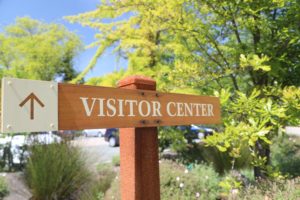
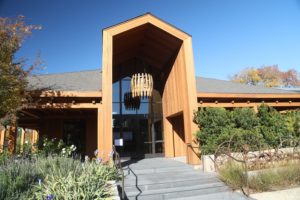
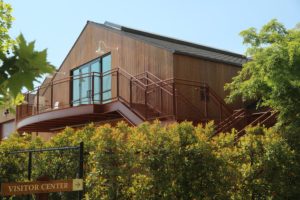 In 2018 construction began on a major expansion of their hospitality center – first conceptualized some 17 years prior by the Cakebread family. The expansion included the gorgeous hospitality center, additional fermentation space, barrels rooms and offices. Several other highlights are 9 unique and private rooms for hosting small groups for tastings (each named after one of their vineyards with several built right into the cellar space), an outdoor courtyard in part used for a small garden and retail spaces. The siding on the outside of the visitor center as well as the paneling inside one of their tasting rooms are made of recycled and re-milled redwood from staves of old large redwood wine tanks that Cakebread Cellars purchased from Beaulieu Vineyard
In 2018 construction began on a major expansion of their hospitality center – first conceptualized some 17 years prior by the Cakebread family. The expansion included the gorgeous hospitality center, additional fermentation space, barrels rooms and offices. Several other highlights are 9 unique and private rooms for hosting small groups for tastings (each named after one of their vineyards with several built right into the cellar space), an outdoor courtyard in part used for a small garden and retail spaces. The siding on the outside of the visitor center as well as the paneling inside one of their tasting rooms are made of recycled and re-milled redwood from staves of old large redwood wine tanks that Cakebread Cellars purchased from Beaulieu Vineyard
The hospitality center opened to the public in October 2019 and was designed by BCV Architecture + Interiors and built by Wright Construction with the owners representative work handled by Pound Management. And prior to opening to the public, Cakebread Cellars hosted several grand opening events. These were the last public events which Jack and Dolores attended; both were on site greeting visitors in the hospitality center.
And every year Cakebread Cellars offers an open house (reservations required) where guests can meet the family and enjoy current releases paired with small bites. Their open house in early 2023 was dedicated to Dolores and Jack and simultaneously celebrated their 50th anniversary. Proceeds from the event are donated to local charities including the Napa Valley Food Bank.
Total production is around 200,000 case per year. For more information, to schedule an appointment or to to join one of their wine clubs (joining gives one access to numerous events throughout the year as part of The Good Life Series – hosted mostly at the winery and sometimes in other locations), visit: www.cakebread.com
CAKEBREAD VINEYARDS
Exterior
Hospitality
Winery/Winemaking
Garden
Estate Vineyard
Bezel
In early 2023 Cakebread launched a new wine brand focusing on wines from California’s Central Coast including Paso Robles and the smaller Edna Valley. This is a smart move strategically; land is cheaper than in Napa Valley and so are grape prices which result in lower priced wines. With an eye to the future and younger generations, the Bezel wines are poised to perform well in the market.
The initial bottlings (2021) focus on a Chardonnay and Pinot Noir with a Cabernet Sauvignon released in late 2023. Each bottling is labeled with a black and white photograph originally taken by Jack Cakebread. These wines became nationally distributed in 2025.
And the word bezel is most commonly used in conjunction with gemstones and watches. It is the angled edge on a cut gemstone or the grooved section that holds the crystal in a watch in place.
We hope to sample these wines and add our tasting notes here by Q2 2025.
Mullan Road Cellars
In the early 1990s, the Cakebread’s first began to explore the possibility of expanding their operations to a wine region outside of Napa Valley. Their first non-Napa Valley vineyard purchase was in Anderson Valley to the north in Mendocino County. By 2005 they had reached capacity at Cakebread Cellars but then the recession hit around 2008 and it wasn’t until 2010 that Dennis Cakebread led a serious search for creating a wine outside of Napa Valley.
Through friends his search eventually led him to Washington and finally to Walla Walla (about a 4-4.5-hour drive southeast of Seattle). He recalls the excitement at creating a new brand at the time, some 35+ years after Cakebread Cellars was founded. Part of his enthusiasm was from venturing into a completely new (to him) wine growing region.
Through several well-established winery and winemaking connections Dennis was introduced to select vineyards; Mullan Road Cellars currently sources from two vineyards in the Royal Slope agricultural region (near Royal City) including Solaksen Vineyard and the 235 acre Stillwater Creek Vineyard. The Royal Slope was designed an appellation in 2020. This part of Washington is relatively young when it comes to vineyard sites; it is also desert-like with only 6-8 inches of precipitation falling annually. And unlike Napa Valley, vineyard sites are often planted next to a variety of other crops including cherries and apples.
Because this is such a dry part of the state, agriculture did not become viable until well after the Grand Coulee Dam opened in 1942. The dam led way to a vast network of irrigation channels along various parts of the Columbia basin; agriculture began here in the late 1950s and early 1960s. Soils in the area can be traced to the Missoula Floods – a series of cataclysmic events in which ice dams broke at intervals causing great floods to rage down the Columbia River and far down the Willamette Valley (estimated to have occurred 25 times between 13,000 and 15,000 years ago).
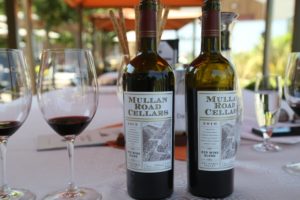
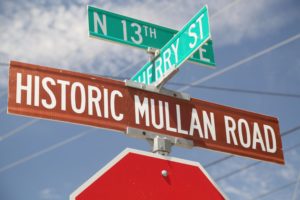 The first vintage of Mullan Road Cellars was from 2012; founding winemaker Aryn Morell grew up in Washington state but spent time making wine in Napa Valley including at Joseph Phelps, Quintessa, Chimney Rock and at Chappellet Winery. Presently, Sally Johnson (formerly of Pride Mountain Vineyards and Robert Mondavi Winery) is the Mullan Road Cellars winemaker. Starting in 2017 the wine became more than 75% varietal Cabernet Sauvignon and in 2019 they began to focus their vineyard sources on the Royal Slope.
The first vintage of Mullan Road Cellars was from 2012; founding winemaker Aryn Morell grew up in Washington state but spent time making wine in Napa Valley including at Joseph Phelps, Quintessa, Chimney Rock and at Chappellet Winery. Presently, Sally Johnson (formerly of Pride Mountain Vineyards and Robert Mondavi Winery) is the Mullan Road Cellars winemaker. Starting in 2017 the wine became more than 75% varietal Cabernet Sauvignon and in 2019 they began to focus their vineyard sources on the Royal Slope.
The wines we have tried on various trips to Washington from a diversity of producers with connections to Napa Valley including Mullan Road Cellars are wines with a strong sense of place, balance and perhaps a bit more restraint at times compared to some of the more opulent Cabernet Sauvignon wines coming from Napa Valley.
Mullan Road Cellars was named after Lieutenant John Mullan, (1830-1909) a West Point graduate who was a lawyer, soldier and road builder. He was most famous for commanding some 200 people including U.S. Army troops to build a 600-mile-long wagon road crossing the Rocky Mountains to the Pacific Northwest connecting Fort Benton along the banks of the Missouri River in Montana to Fort Walla Walla in Walla Walla. Today Mullan Road is followed somewhat by Interstate 15 and Interstate 90. A historic site is located in Walla Walla on the corner of 13th and Abadie – sponsored in part by Mullan Road Cellars. A little walkway passes by signs providing historical insights into John Mullan, Walla Walla and the Mullan Road.
Mullan owned several businesses in Walla Walla including a livery stable and had partial ownership of a sawmill. For a time he lived in San Francisco, California. He made money from his various businesses and then lost it; he died broke in 1909 in Washington DC.
There are numerous other Mullan Road connections as one drives from Montana to Walla Walla; several we have personally visited include the tiny town of Mullan in Idaho and its John Mullan Centennial Park and the Captain John Mullan Museum. This museum is well worth visiting both for more information about John Mullan but also a historical look at the region. We informed the friendly docents during our visit about Mullan Road Cellars as they were not aware of these wines.
And Mullan Road Historical Park, located alongside Interstate 90 about 20 minutes east of Coeur d’Alene is worth a stop if one finds themself in the area. Parts of original roads and the original path of Mullan Road can be seen here. The Mullan Tree used to stand here with the date, July 4, 1861 carved into its base referencing the day Mullan’s crew was here. Part of this tree was toppled by a wind storm in late 1962. The stump remained until it was removed in 1988 and is how housed in the Museum of North Idaho in Coeur d’Alene.
Mullan Road Cellars, Tasting Lounge
In 2023 Mullan Road Cellars opened a tasting lounge at 17401 133rd Ave NE #1004 in downtown Woodinville’s Wine Walk Row / Historic Schoolhouse District right next to the Woodinville Sports Fields. These buildings were completed in 2021; parking is in an adjoining parking garage located within a very short walk from the tasting room as are several restaurants. Parking is free with a validation from a business in the Wine Walk Row including Mullan Road Cellars. The tasting lounge is 1,700-square feet and includes a separate room where visitors can choose various sized pours from wine stations.
Select wines from Cakebread Cellars are also available for tasting and or purchase. And with a kitchen on site, small bites including sharables, snacks and sandwich/salads can be ordered to be paired with the various wines. One of the snack highlights from a recent visit was the Caramelized Walla Walla Sweet Onion Dip & Chips. Seating is both indoors and weather permitting, outside in front of the tasting lounge in a fenced off space.
Prior to opening this space, tastings were hosted at The Morell Wine Collective where Mullan Road produces the wines in Walla Walla.
Select Wines
The 2020 Mullan Road Cellars Cabernet Sauvignon, Royal Slope AVA is led by Cabernet Sauvignon but also is blended with Cabernet Franc anbd Merlot. This wine is deep ruby in color; this wine offers aromas of red chili spice, Santa Rosa plum, boysenberry, old cedar box, dark pepper, sage and tobacco. Bright. Juicy. Mouthwatering. The palate is red fruited sporting flavors of currant, cherry, raspberry and dried herbs including smoked sage, bay leaf, cedar and dark pepper. Savory. Gamey. The grainy and gravelly tannins linger with a persistent, lightly drying character which outpaces the fruit on the finish.
The 2019 Mullan Road Cellars Winemaker’s Selection Cabernet Sauvignon Royal Slope is 100% varietal and spent 21 months aging entirely in French oak barrels, of which 55% were new. This wine is deep ruby and nearly opaque in color; the bouquet offers plenty of aromatics including red cherry, plums, blackberry and lilacs, pink peppercorn, sage and dried bay leaf with a hint of dark chocolate that becomes more expressive as the wine evolves in the glass. The scents show an attractive ripeness, but are nowhere near being overripe. The palate reveals flavors of blackberry, dark plum and dark cherry. Bright and savory, the finish lingers earthy with gravelly tannins, dried herbs and crushed dark pepper. This is a hearty wine of this variety. Pair with a tobacco and a roaring fire on a cold winter night in the mountains or go the opposite direction and find the company of a warm summer night, friends and a a BBQ.
The 2016 Mullan Road Cellars Red Wine Blend is noticeably dark in the glass. It offers a dramatically different bouquet from the 2015 vintage. Savory in its aromatic presentation it reveals aromas of tobacco paper, cigar smoke, dark spices and cedar. Meaty at times, it reveals dark fruit notes including spicy plum. This wine features bright acidity with a lively finish that dances across the palate – a brightness of fruit if you will, lingering with both flavors of red cherry, cranberry and a tiny hint of mint. Superbly balanced, there are no harsh edges including the finish which is anchored by supple and very polished tannins. This is a pleasure to drink in its youth but is also certainly very cellar worthy.
The 2015 Mullan Road Cellars Red Wine Blend offers bright fruit on the bouquet including red cherry, raspberry, hints of red licorice and crème de cassis. As the wine opens further a sweetness of both fruit and spice begins to show including aromas of mocha. The texture certainly stands out on the palate – plush on the entry but it quickly develops additional layers. The tannins are earthy, pronounced and linger noticeably for quite some time along with flavors of dark cherry, blackberry and boysenberry.
—
Dennis also participates in select winemaker dinners and special events showcasing several vintages of Mullan Road Cellars including an event in Denver that combines fly fishing with wines from Mullan Road Cellars. Total annual production is around 6,500 cases. For more information and to order wine, visit: www.mullanroadcellars.com
MULLAN ROAD CELLARS
Tasting Room
Fort Walla Walla Museum/Park
Mullan Road Historical Site, Walla Walla Washington
Mullan, Idaho
Mullan Road Historical Site, Cataldo, Idaho
SOURCE VINEYARDS
Solaksen Vineyard (under Lawrence family ownership)
Photos coming as time and budget allow
Stillwater Creek Vineyard
Seven Hills Vineyard
Lawrence Vineyard (No longer sourcing grapes from)







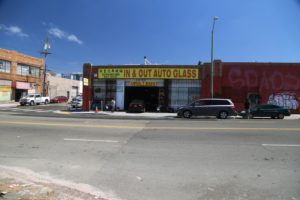
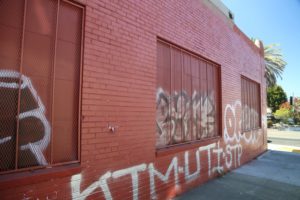
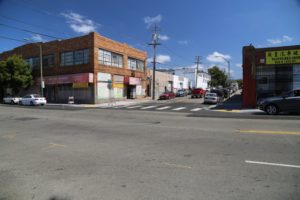
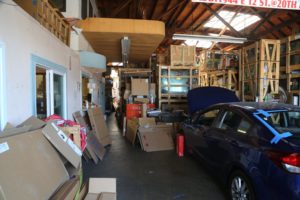

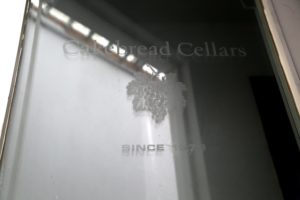
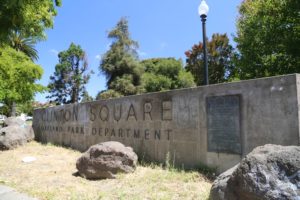
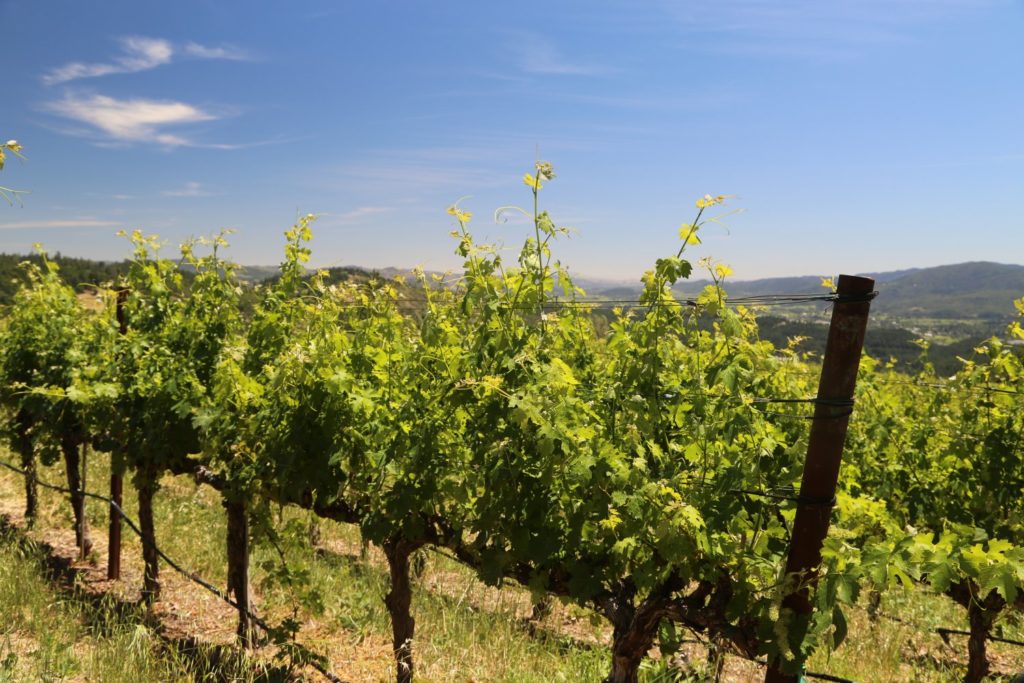
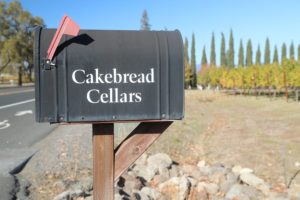
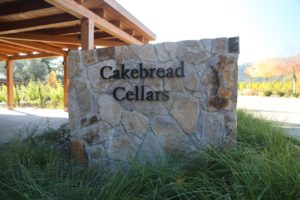
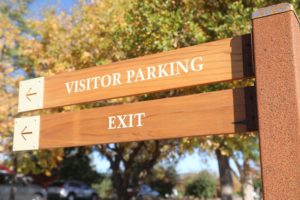
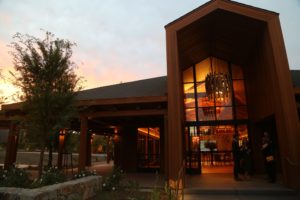
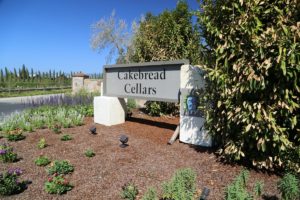
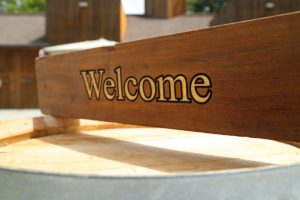
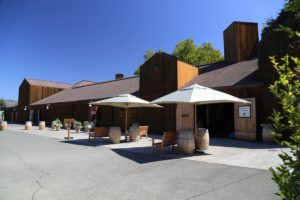
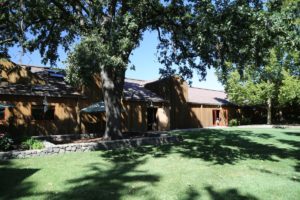
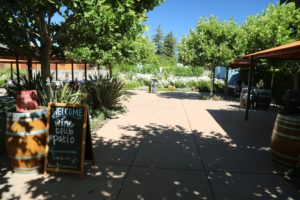
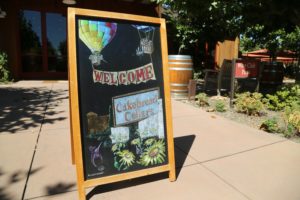
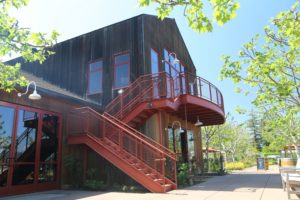
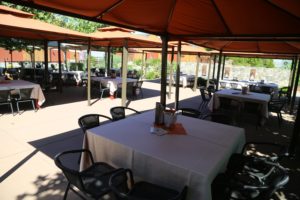
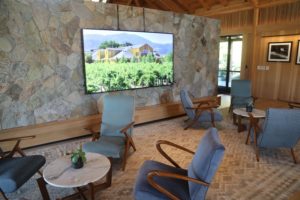
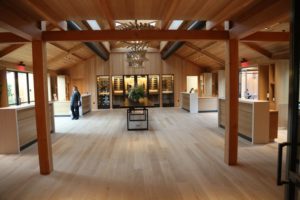
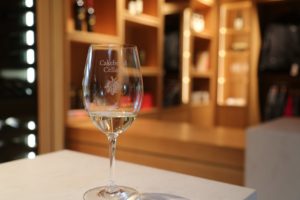
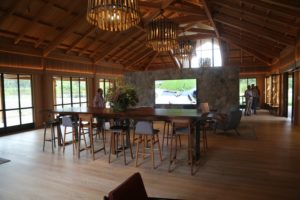
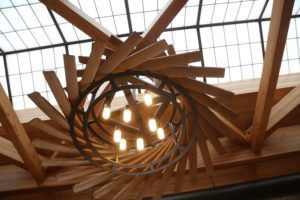
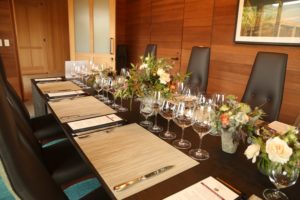
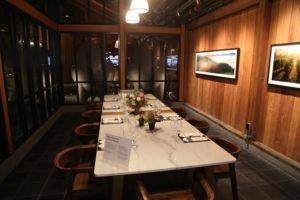
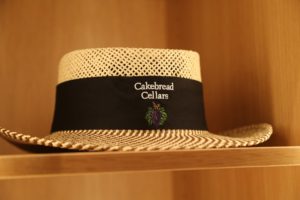
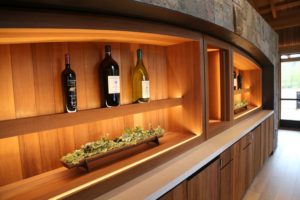
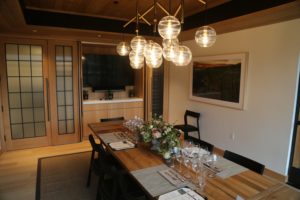

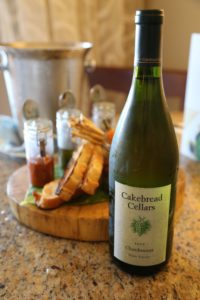
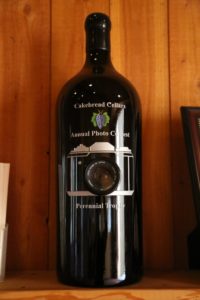
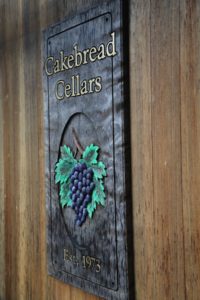
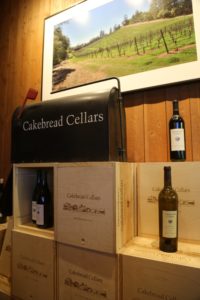
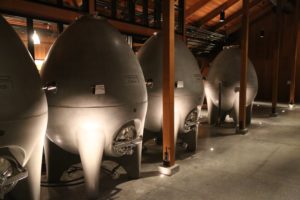
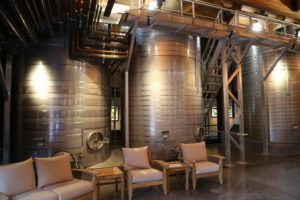
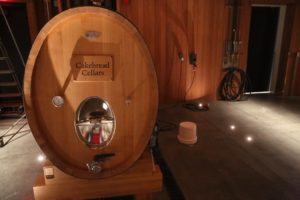
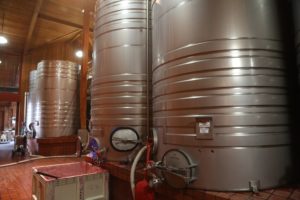
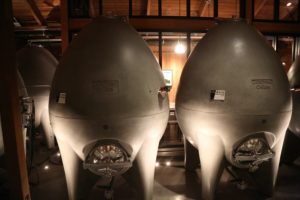
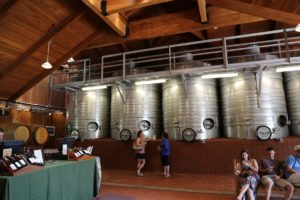
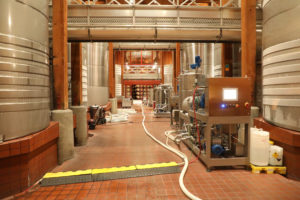
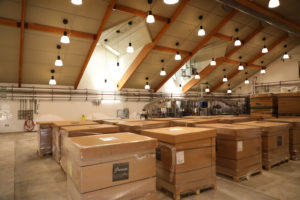
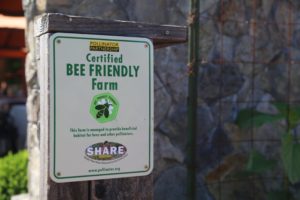
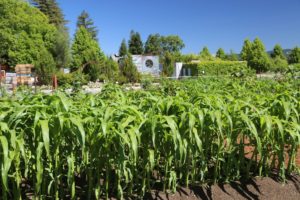
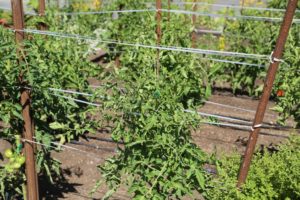
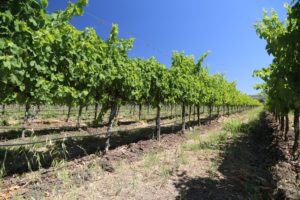
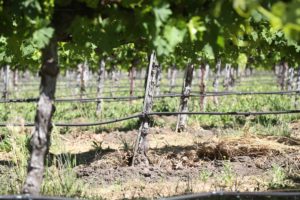
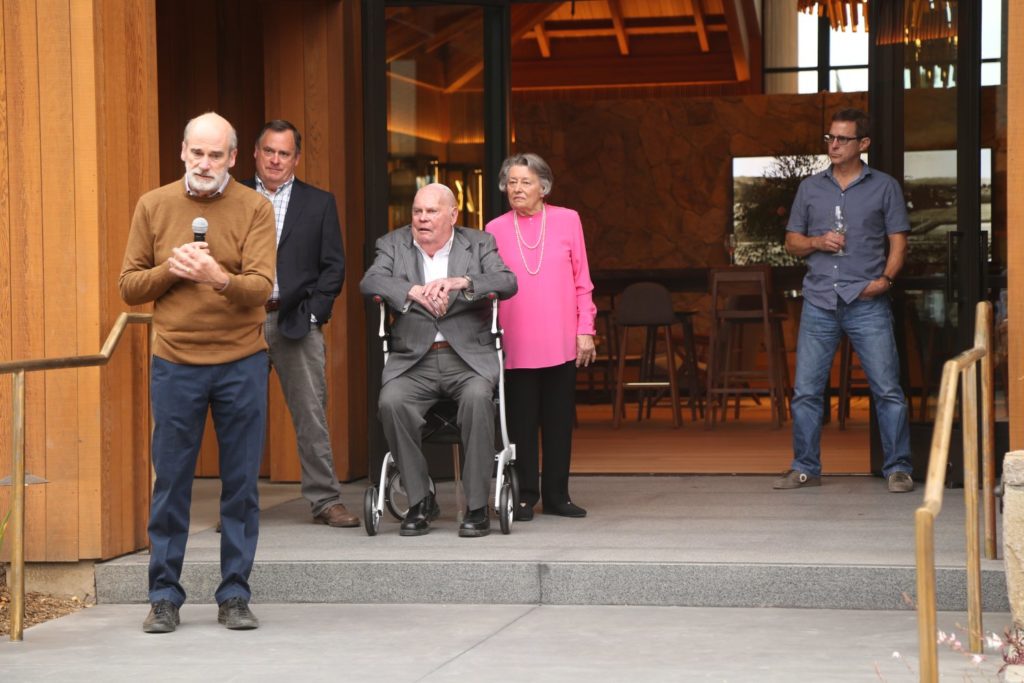

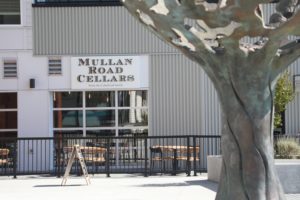

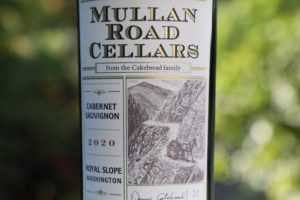
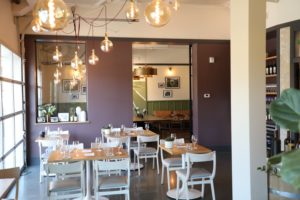
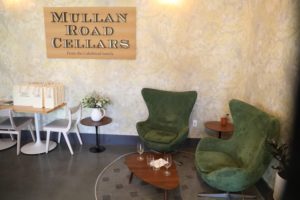


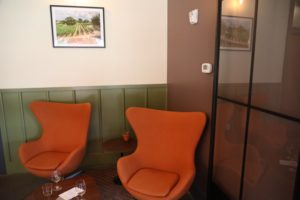
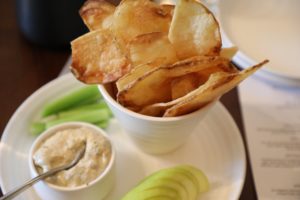
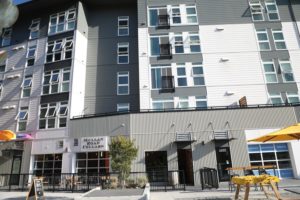
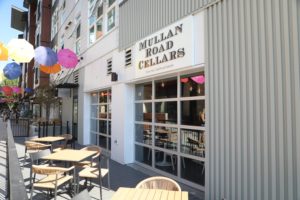

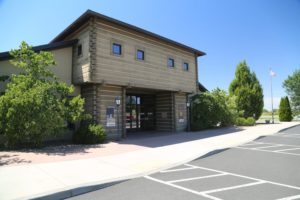
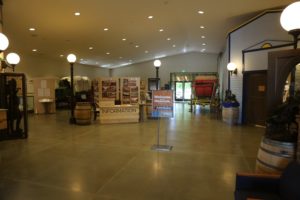
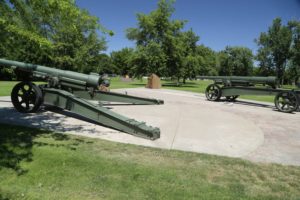
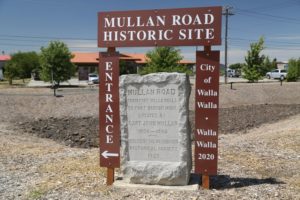

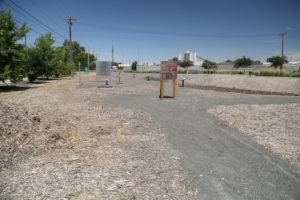
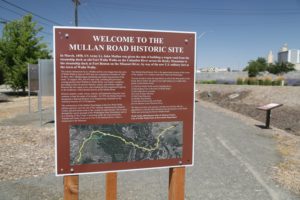
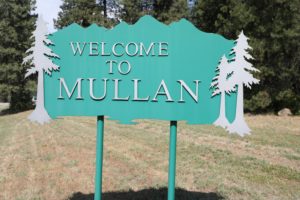
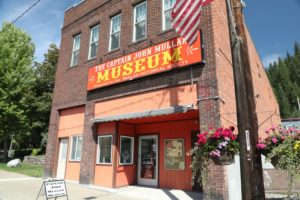
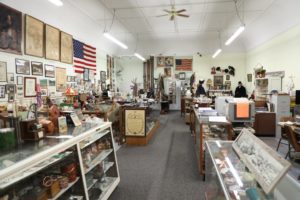
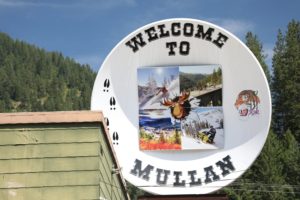
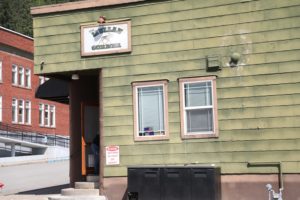




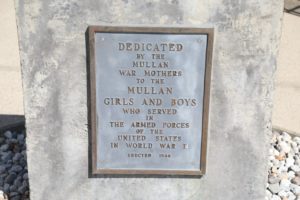
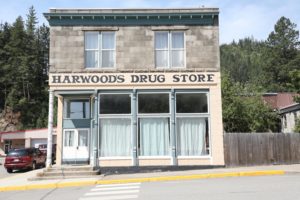

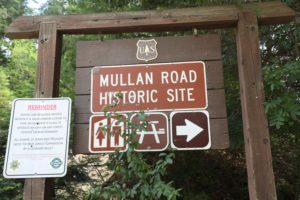
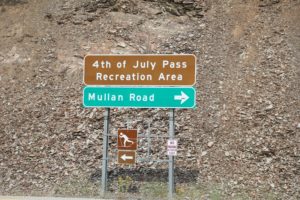
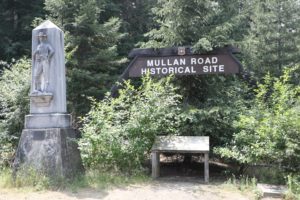
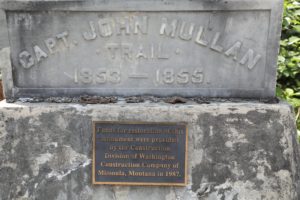
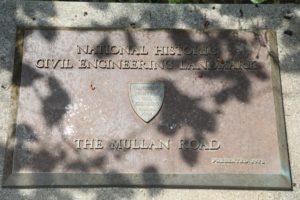
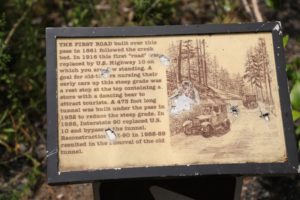
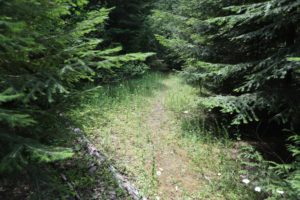
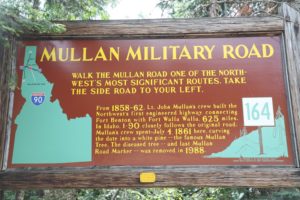
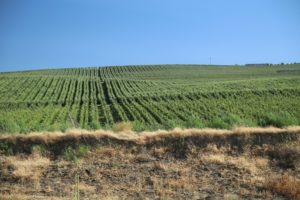
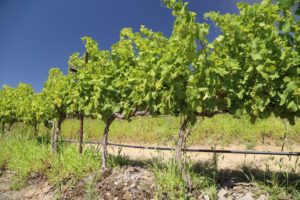
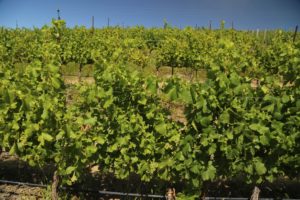
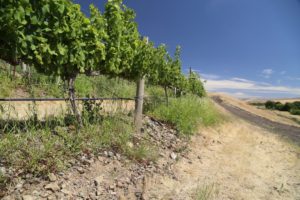
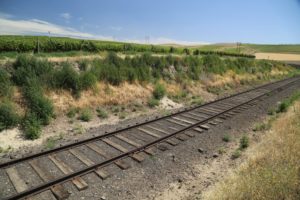
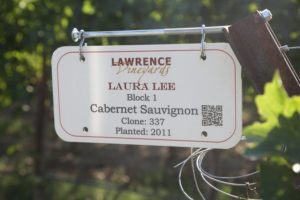
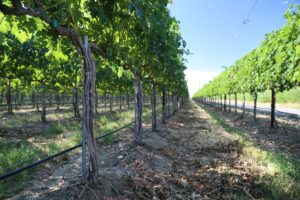
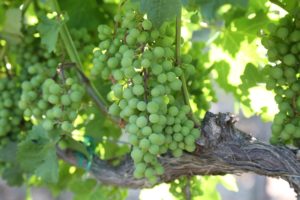
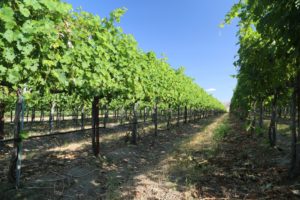
My son and fiancée live in Alamo having just finished at Berkeley…. and love visiting Napa. I would like to buy them a visit to Cakebread with your , food and wine tasting . As a Christmas present . .what can you suggest
Thank you
Susan Smith
Susan – I hope you connected with Cakebread directly and were able to gift a tour and tasting for your son and his wife to Cakebread 🙂